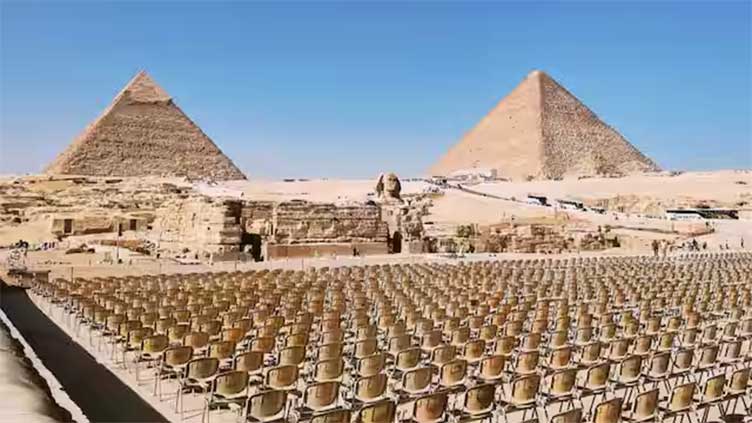Workers who built Egypt's pyramid complex were poisoned. Here's why

WeirdNews
The labourers were most probably exposed to high amounts of copper
(Web Desk) - In a new study, the researchers have found that the workers who constructed the famous Giza pyramid complex in Egypt were poisoned by copper.
The study hints that while working on the necropolis, the labourers were most probably exposed to high amounts of copper which may have been the first example of metal contamination in the world.
The discovery of toxic copper in the ancient soil also hinted at the existence of a well-established tool-making industry during that time.
A team of geochemists from France’s Aix-Marseille Université started drilling into the ground in the 4,500-year-old port of Khufu harbour in 2019.
This is the oldest port ever known in the city and is close to the site where the pyramids of pharaohs Khufu, Khafre, and Menkaure are present.
The samples collected were examined by the scientists using a technique called plasma-less spectrometry which helps measure the levels of copper as well as other metals like aluminum, iron, and titanium.
WHAT DID COPPER CONTAMINATION HINT AT?
In a new study, the same team - after using carbon dating - reported that the copper contamination probably started around 3265 BCE which meant that the humans had occupied the area 200 years earlier than previously believed.
After 750 years, the contamination peaked and eventually disappeared around 1000 BCE. The levels of copper were “5 to 6 times higher than the natural background,” said Alain Véron, a faculty member at France’s Aix-Marseille University who worked on the study, while speaking to Eos.
As per the researchers, the presence of copper hints at the existence of a thriving tool-making industry.
The discovery of arsenic - which is a semi-metallic element that was used for strengthening other metals by the metalworkers - in the samples hinted that the workers were most probably building tools like blades, chisels, and drills.
The study further emphasised that these tools were most likely important for the construction of the pyramid complex.


